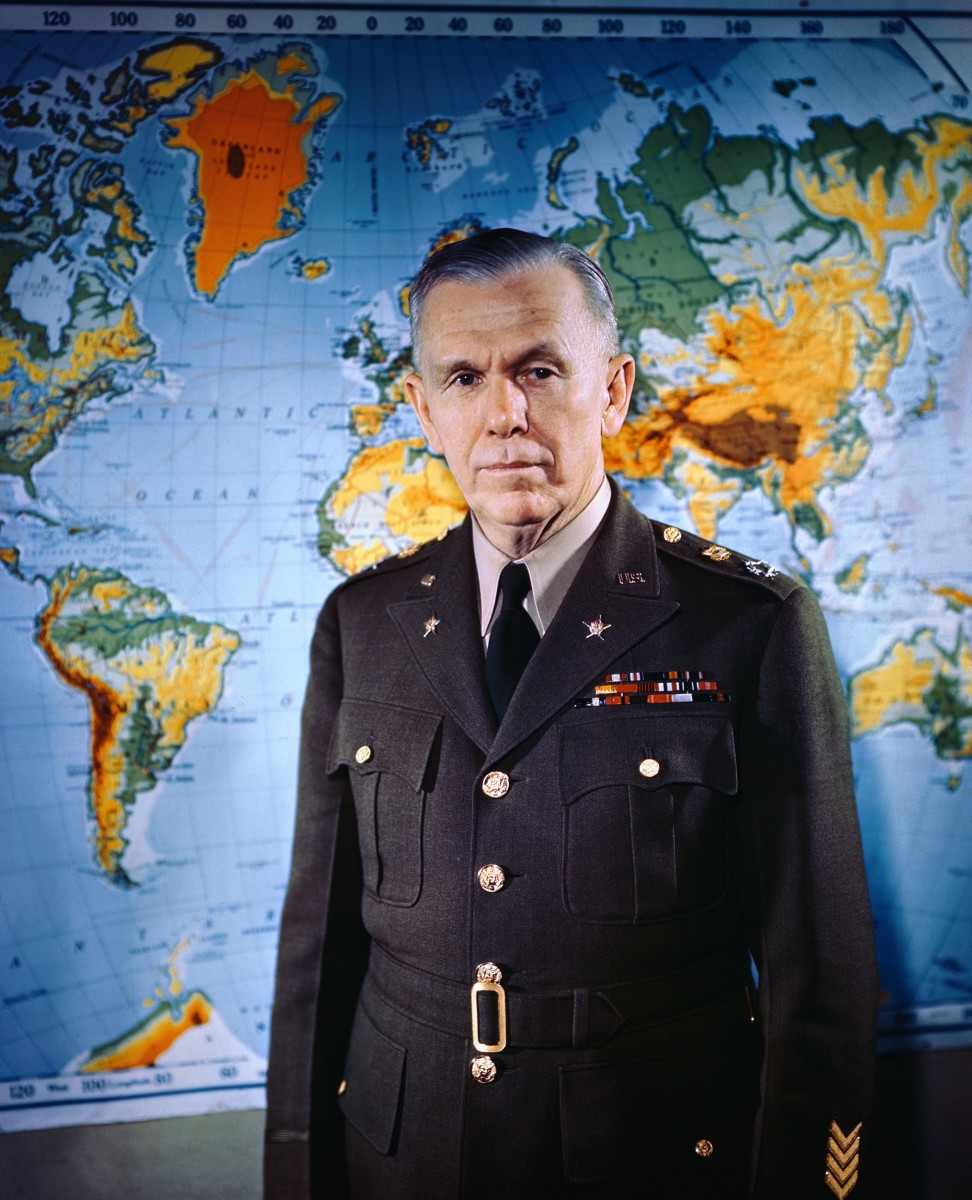My Oh My how the Demies have changed!
April 3, 1948 – President Harry S. Truman signs off on legislation establishing the Foreign Assistance Act of 1948, more popularly known as the Marshall Plan. The act eventually provided over $12 billion of assistance to aid in the economic recovery of Western Europe. In the first years following the end of World War II, the economies of the various nations of Western Europe limped along. Unemployment was high, money was scarce, and homelessness and starvation were not unknown in the war-ravaged countries. U.S. policymakers considered the situation fraught with danger. In the developing Cold War era, some felt that economic privation in Western Europe made for a fertile breeding ground for communist propaganda. A key element of America’s policy to contain the influence of the Soviet Union was the recovery of Western Germany (Eastern Germany was occupied by Soviet troops), and that recovery required the revitalization of Germany’s natural markets in Western Europe. In addition, strengthening the economies of other Western European countries would better equip them to fight the threat of communism, either from Soviet expansion or from domestic communist parties. In June 1947, Secretary of State George C. Marshall made a dramatic call for a massive economic recovery program, one that would provide billions for the stagnant economies of Western Europe. The result of Marshall’s call to action was the Foreign Assistance Act of 1948, which was passed by wide margins in Congress. In signing the act, President Truman declared that it represented “perhaps the greatest venture in constructive statesmanship that any nation has undertaken.” Secretary Marshall congratulated Congress for having “faced a great crisis with courage and wisdom.” The act provided an initial grant of $4 billion for Western Europe. By the time the program came to an end in late 1951 over $12 billion had been expended. Although the Marshall Plan was not an absolute success (the large influx of American dollars led to rampant inflation in some areas), it did stabilize and revitalize the economies of Western Europe. British Foreign Secretary Ernest Bevin declared that it had been “a lifeline to sinking men.”
April 3, 1948 – President Harry S. Truman signs off on legislation establishing the Foreign Assistance Act of 1948, more popularly known as the Marshall Plan. The act eventually provided over $12 billion of assistance to aid in the economic recovery of Western Europe. In the first years following the end of World War II, the economies of the various nations of Western Europe limped along. Unemployment was high, money was scarce, and homelessness and starvation were not unknown in the war-ravaged countries. U.S. policymakers considered the situation fraught with danger. In the developing Cold War era, some felt that economic privation in Western Europe made for a fertile breeding ground for communist propaganda. A key element of America’s policy to contain the influence of the Soviet Union was the recovery of Western Germany (Eastern Germany was occupied by Soviet troops), and that recovery required the revitalization of Germany’s natural markets in Western Europe. In addition, strengthening the economies of other Western European countries would better equip them to fight the threat of communism, either from Soviet expansion or from domestic communist parties. In June 1947, Secretary of State George C. Marshall made a dramatic call for a massive economic recovery program, one that would provide billions for the stagnant economies of Western Europe. The result of Marshall’s call to action was the Foreign Assistance Act of 1948, which was passed by wide margins in Congress. In signing the act, President Truman declared that it represented “perhaps the greatest venture in constructive statesmanship that any nation has undertaken.” Secretary Marshall congratulated Congress for having “faced a great crisis with courage and wisdom.” The act provided an initial grant of $4 billion for Western Europe. By the time the program came to an end in late 1951 over $12 billion had been expended. Although the Marshall Plan was not an absolute success (the large influx of American dollars led to rampant inflation in some areas), it did stabilize and revitalize the economies of Western Europe. British Foreign Secretary Ernest Bevin declared that it had been “a lifeline to sinking men.”
My Oh My how the Demies have changed!
April 3, 1948 – President Harry S. Truman signs off on legislation establishing the Foreign Assistance Act of 1948, more popularly known as the Marshall Plan. The act eventually provided over $12 billion of assistance to aid in the economic recovery of Western Europe. In the first years following the end of World War II, the economies of the various nations of Western Europe limped along. Unemployment was high, money was scarce, and homelessness and starvation were not unknown in the war-ravaged countries. U.S. policymakers considered the situation fraught with danger. In the developing Cold War era, some felt that economic privation in Western Europe made for a fertile breeding ground for communist propaganda. A key element of America’s policy to contain the influence of the Soviet Union was the recovery of Western Germany (Eastern Germany was occupied by Soviet troops), and that recovery required the revitalization of Germany’s natural markets in Western Europe. In addition, strengthening the economies of other Western European countries would better equip them to fight the threat of communism, either from Soviet expansion or from domestic communist parties. In June 1947, Secretary of State George C. Marshall made a dramatic call for a massive economic recovery program, one that would provide billions for the stagnant economies of Western Europe. The result of Marshall’s call to action was the Foreign Assistance Act of 1948, which was passed by wide margins in Congress. In signing the act, President Truman declared that it represented “perhaps the greatest venture in constructive statesmanship that any nation has undertaken.” Secretary Marshall congratulated Congress for having “faced a great crisis with courage and wisdom.” The act provided an initial grant of $4 billion for Western Europe. By the time the program came to an end in late 1951 over $12 billion had been expended. Although the Marshall Plan was not an absolute success (the large influx of American dollars led to rampant inflation in some areas), it did stabilize and revitalize the economies of Western Europe. British Foreign Secretary Ernest Bevin declared that it had been “a lifeline to sinking men.”
0 Commentarios
0 Acciones
72 Views




